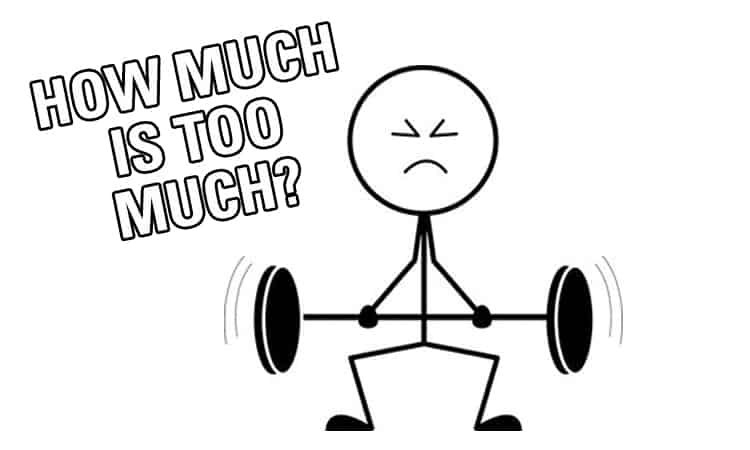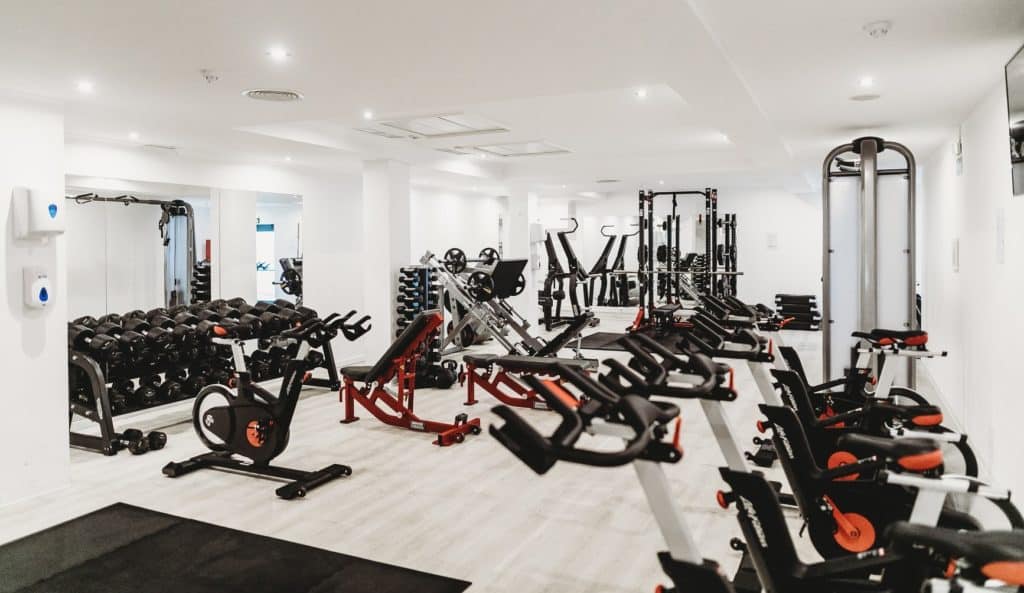
Starting a workout program for the first time is an exciting endeavor. Many people can attest to the addictiveness of working out. But with any skill set comes a huge learning curve.
Lifting weights is a skill just like anything else. While it is not a formal sport like basketball or soccer, technique with lifting is crucial for progress and preventing injury. Even if you’re not an expert, intuitively you can look around the gym and tell who knows what they’re doing.
As a beginner you’re likely eager to get into the gym as much as possible. But at the same time you don’t want to overdo it for fear of injury or overtraining. Surely there is a happy medium to achieve both.
Beginners should lift weights 3 to 4 times per week. This allows for proper recovery from workouts but also stimulates physique changes like muscle gain and fat loss.
This rule applies no matter the goal; whether it’s building muscle, getting into better cardiovascular shape, or just improving overall health.
How Much is Too Much?
When resistance training for the first time, it’s important to strike a balance between seeing results and leaving room to grow. If you work out every day, you will see results, but also leave no room for long term growth.
Think about it this way. At a certain point your results will plateau, no matter what routine you are following. Taking a conservative approach from the start allows you to get the most out of each step in the process toward mastery.
Limiting workouts to 3 to 4 times per week as a beginner is a great strategy for long-term results. By following our guidelines, you’re able to maximize the results from working out 3 to 4 times per week. Once this happens, you can add the 5th and 6th workouts to your weekly routine. This ensures long term progress.
You should always maximize the results when following a specific training routine before looking to add more work. This is why it’s important to have flexibility in workout program progression. If the muscle gains are still coming by lifting 4 days per week, it makes no sense to arbitrarily add a 5th day for no reason.
Remember that working out is a skill, but a unique one at that. You could learn the piano rather quickly by playing all day every day. But you can’t work out all day every day because the body has physical limitations.
Limitations as a Beginner
The number one variable for new muscle growth is mechanical tension on the muscle. In other words, using proper form with adequate resistance (weights, cables, machines, etc.) on an exercise will effectively stimulate the muscle and lead to growth.
Working out takes time to master. In the beginning you’re likely lifting just to get through the exercise. You’re not worried much about feeling the exercise where it should be felt.
As time passes you will develop the mind muscle connection necessary to get the most out of each movement.
A beginner’s primary concern should be to achieve proper form on the most important exercises. This will not only help you avoid injury but jump-start you on the track to a better physique.
As a personal trainer, I can tell you that I would much rather work with someone brand new than someone with experience but has poor exercise form.
Bad habits are very hard to break. If you’ve ever seen an athlete change their shooting form or throwing motion, just note that it took thousands of repetitions in the offseason to do so.
With lifting, it’s good to learn things the right way from the beginning. Whether it’s working with a personal trainer, an experienced workout partner, or following tutorials online, it’s critical to get your form right.

Best Workout Program for Beginners
There are many ways to structure a program, and as a beginner it’s important not to overcomplicate things. As mentioned, the most important thing to learn at this stage of training is proper exercise technique. That coupled with consistency in the gym is enough to yield results.
More work is not always better for people new to the gym. There are diminishing returns when the training volume gets too high since they do not have the ability to recover like an intermediate or advanced person would.
There are two main workout program types; split training and high frequency training. At this stage I would simply choose the one that you prefer personally.
Split training means you divide your body parts into separate workouts. This is the type of training that most people are probably familiar with. With split training you have things like chest day, leg day, arm day, etc.
If you choose to implement split training just be sure to give each body part adequate attention, since you’d only be hitting it once per week.
High frequency training is just the opposite. Using this strategy, you hit multiple body parts in a single workout.
High frequency training could mean full body workouts each day, an upper body/lower body rotation, or a push (chest, triceps, and shoulders) pull (back biceps) legs rotation. While at times it may feel like you didn’t do “enough” for each muscle during the workout, you have to remember that you’ll be hitting that muscle group again before the week is over.
At this point, it’s important to grasp the basic understand of training volume. Training volume is best measured as the number of exercise sets performed per body part per week. Training volume is the second most important factor in building muscle, behind proper exercise form.
You may only hit chest for one exercise if you’re doing a full body routine. But since you’re doing full body 3 or 4 times per week, your chest will eventually get enough training volume.
For more in depth information on 4 day training splits, check out this article.
How Long Should Each Workout Last for Beginners?
Everyone moves at their own pace, but a workout for a beginner probably shouldn’t exceed an hour. The sweet spot for most people is about 45 minutes. At a certain point workouts become catabolic, and the body has a hard road ahead in order to recover properly.
Muscle damage is a natural by-product of working out. It’s part of the reason why you feel sore the next day. But too much is counterproductive and can not only inhibit muscle gain, but result in muscle loss. With that said soreness is not necessarily an indication of a good or bad workout.
Working out can be addictive, and feels great when you’re in the zone. Through trial and error you’ll have to find the right balance between pushing yourself and not overtraining. Just remember that this is a lifelong endeavor and there’s no rush. Ideally, lifting weights is something you will do for the rest of your life.
Recent Posts
Stretching Before Workouts: Essential Warmup or Performance Killer
“Don’t stretch before workouts, your muscles become too supple” “Stretch before your workouts, warming up is important” It's conflicting advice like this that drives people crazy,...
Best Protein Bar For the Money | Cost Effective, High Quality
Protein bars are no longer a supplement dedicated to diehard gym rats, with awful taste and the consistency of a brick. Men, women, and even teenagers can commonly be seen eating protein bars. The...
